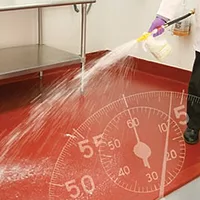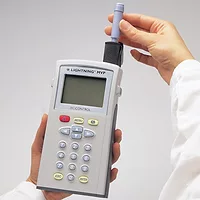Protecting Your Assets with Better HACCP

While food safety is the obvious goal of every food safety program, protecting your company’s assets is another essential requirement. The strength of your brand relies on your company’s ability to produce a quality product—and you are on the front line.
Each food safety professional has a unique approach to their Hazard Analysis and Critical Control Points (HACCP) and food safety program, depending on education, experience and industry. However, one thing is constant: If you don’t start with a clean plant, sooner or later your food safety program will fail. To establish a good basis for quality food processing a complete sanitation program—consisting of both cleaning and monitoring—must be established, and regularly reviewed to ensure its ongoing
effectiveness.
A primary tool in effective cleaning of a food plant is correct concentration of cleaners and sanitizers. While titration kits and chemical strips provide indications of chemical concentration, neither is ideal. Titration kits are very dependent upon the user’s training and can be time-consuming. Conversely chemical strips are easy to use and provide quick results, but are also relatively inaccurate and have intrinsic variability of 25% to 33%. Additionally, neither provides a strong audit trail requiring users to record strength and date.
BioControl Systems, Inc. has devised another method for determining chemical concentrations, combining the accuracy of titration kits with the ease of use of chemical strips. The LIGHTNING MVP, a portable, multi-parameter HACCP monitoring system, offers a simple reusable probe that accurately measures and automatically records the concentration of cleaners and sanitizers. This unique method provides a clear pass or fail determination to sanitation staff, ensuring your chemicals are always mixed correctly. Finally, the concentration value is saved with a time-and-date stamp, ensuring a strong audit trail.
Did It Work?
Once cleaning has been completed, monitoring to ensure it was accomplished properly is the next step since, “What gets monitored gets done.” Changes in cleaning staff, raw materials, chemicals, seasons and many more variables impose challenges on any sanitation program and timely and reliable feedback on its effectiveness is vital.
ATP monitoring provides that immediate feedback, allowing timely intervention if the daily cleaning was ineffective, as well as a window into the impact the program has over time. By measuring the amount of organic residue on a surface you know the potential for microbial contamination. This is a direct indication of the work your sanitation staff and chemicals have accomplished. By monitoring in this fashion, requirements of vendors, government auditors and your HACCP plan are met, protecting your company’s assets.
The ATP monitoring instrument’s accuracy and repeatability has a direct effect on how precisely and thoroughly a sanitation program is able to be monitored. It must be sensitive, stable in the face of changes in room temperature, swabbing technique and chemical interference. A food processing plant poses many challenges for a portable device and when choosing a system to use in that environment, a rigorous evaluation process should be followed and these key requirements met:
What tools are available to ensure instrument calibration? Can they be used on-site? Do the swabs require special storage conditions and can they be stored at room temperature? What is the sensitivity of the ATP system? Is it sensitive enough to detect even low levels of ATP? Are the readings consistent? Do chemical residues impact results? Will the instrument function consistently regardless of the ambient temperature?
Reporting and periodic review of a sanitation program is one of the most overlooked yet vital aspects of any monitoring system. While monitoring allows on-the-spot decisions, without looking at trends a large part of the value of any monitoring system is lost. Trend reporting provides insight into effectiveness of chemicals, impact of wear and tear on equipment and trouble spots that require a closer look.
If monitoring multiple plants, BioControl’s LIGHTNING MVP system provides a unique service. Results from multiple plants can be submitted to BioControl where database experts compile a confidential report comparing plants and providing benchmarks against others in the food processing industry. Without requiring busy QA departments to do complex computer work, multi-plant sanitation programs can be compared and contrasted allowing for optimization of the program and a safe, high-quality end product.
When it comes to protecting your company’s assets, the effective implementation and monitoring of a HACCP plan is critical. Behind every successful HACCP program are effective tracking and monitoring systems that ensure that quality control criteria are consistently being met. Tools, like the LIGHTNING MVP, provide accurate and convenient monitoring and assurance that your assets are protected.
www.biocontrolsys.com
>
Looking for quick answers on food safety topics?
Try Ask FSM, our new smart AI search tool.
Ask FSM →








